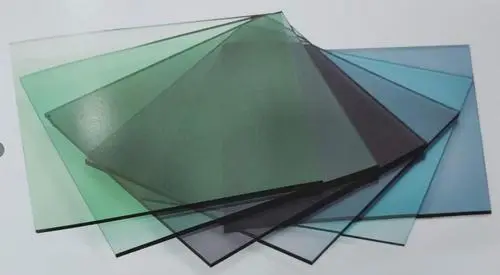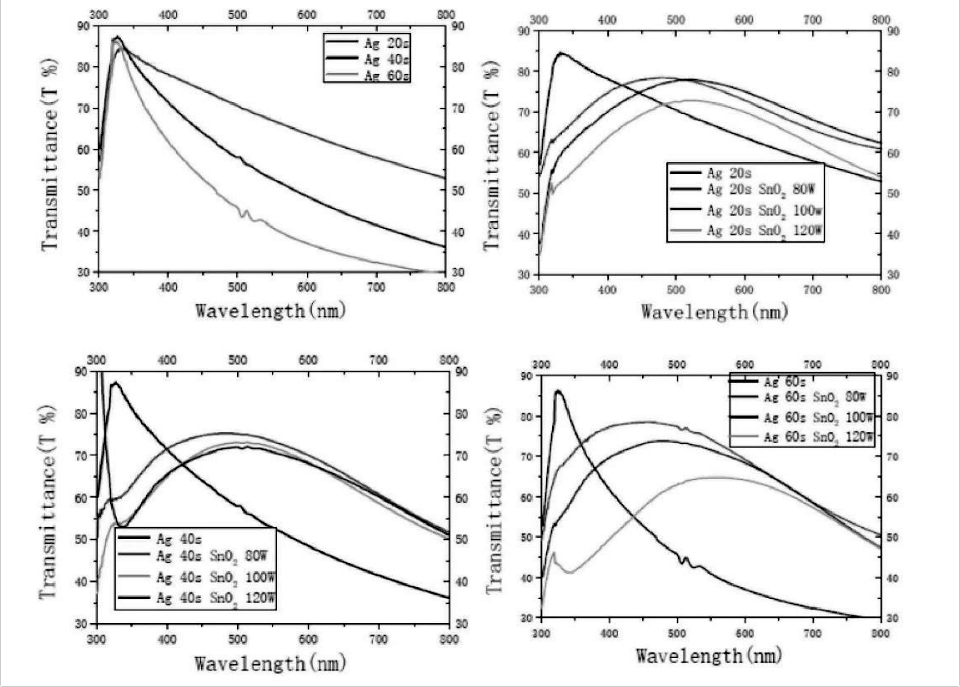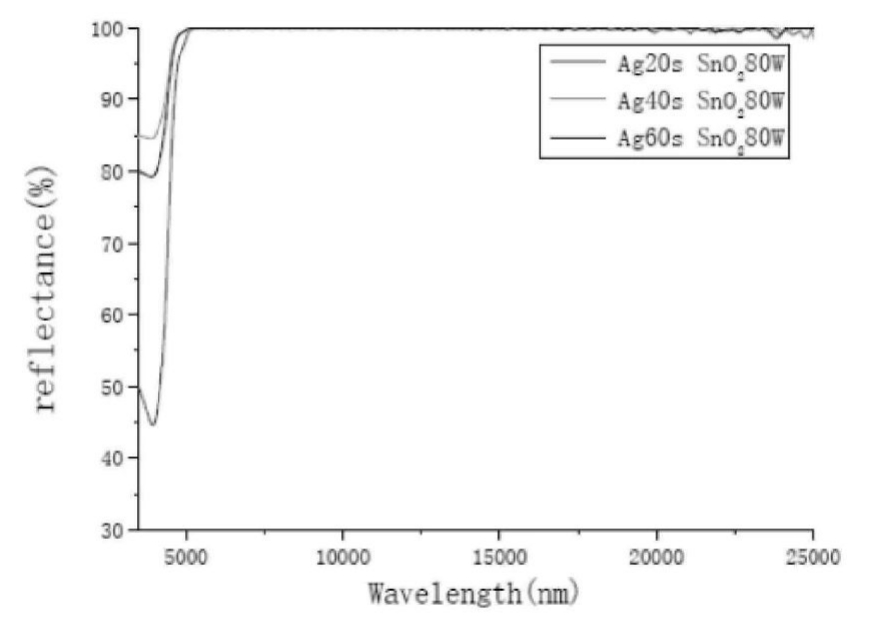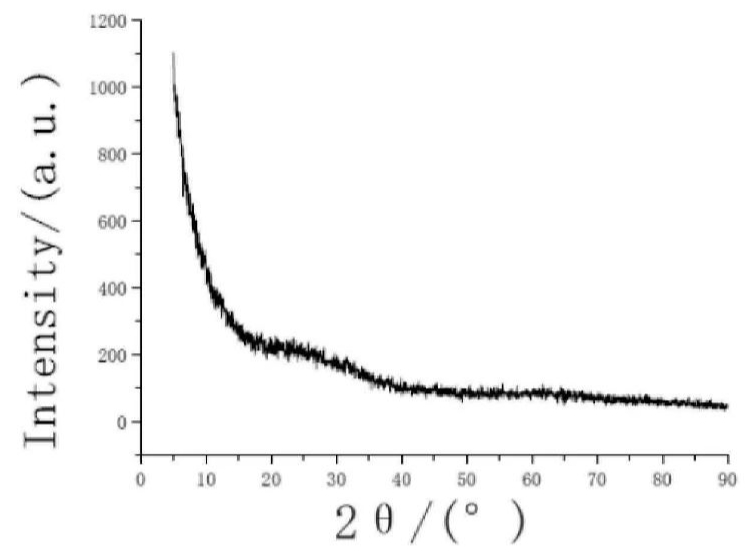Preparation and evaluation of low-emissivity coated glass suitable for cold areas.
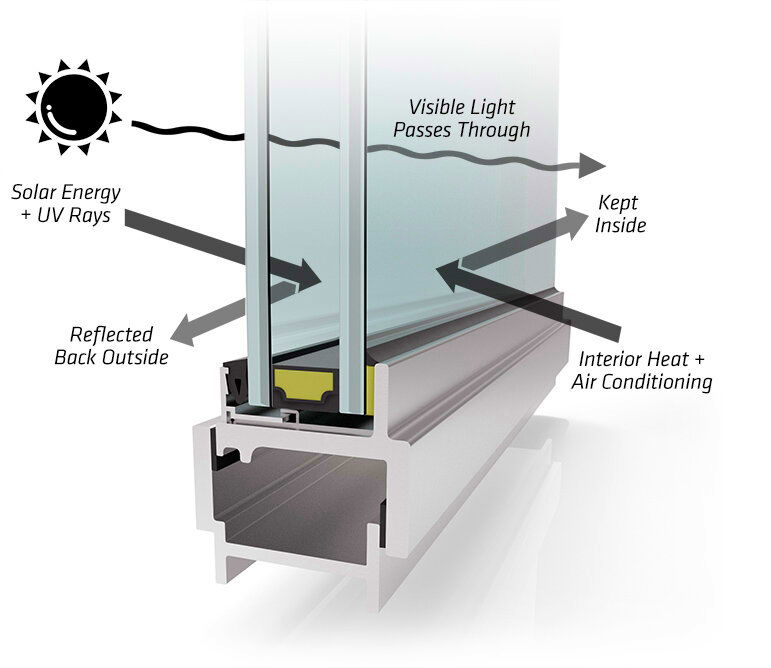
1. Introduction
At present, in existing buildings in some developing countries, external envelope structures such as doors and windows are still the weak points of the building's thermal insulation. Glass accounts for 70% to 90% of the total area of doors and windows. The heat loss caused by glass is the main part of the thermal energy loss of the building's exterior door and window enclosures. Reducing the heat loss of glass doors and windows is of great significance to building energy conservation.
Improving the thermodynamic properties of glass needs to be discussed from the following factors: first, heat loss caused by convection, heat conduction, and solar thermal radiation absorbed by the glass itself; second, heat directly entering the room due to sunlight. Taking the winter in the mid-to-high latitudes of the northern hemisphere as an example, different regions have different needs. In cold winter areas, the glass of buildings needs to have higher visible light transmittance, so that the indoor lighting effect can be good, the indoor temperature can be increased, and the infrared reflection can be higher. It achieves the purpose of reducing indoor heat loss and reducing heating energy consumption in winter by reflecting the heat emitted by indoor objects; while the opposite is true in hot areas in summer. The third is heat loss caused by the sealing of the glass itself.
In the daily use of buildings, insulation, and lighting are two indispensable requirements. Therefore, energy-saving glass has become a new direction of research. Low-emissivity coated glass has become an indispensable material product in the building materials industry in the new era due to its good performance.
1.1 Thermal insulation mechanism of low-emissivity coated glass
Low-emissivity coated glass has a transmittance of more than 70% for visible light, which can ensure indoor lighting and reduce the reflection of light in buildings to avoid light pollution. It has high reflectivity for the infrared band with a wavelength of 4.5~28um, which can effectively reduce the energy consumption of air conditioning in summer and heating energy consumption in winter in the middle and high latitudes of the northern hemisphere. Low-emissivity coated glass has a small thermal conductivity and excellent thermal insulation properties. It can reduce heat exchange indoors and outdoors in buildings and achieve the purpose of energy saving and emission reduction.
1.2 Preparation process of low-emissivity coated glass
The current methods for preparing Low-E glass can be divided into two types: online method and offline method. These two methods are further subdivided into thermal spraying method, chemical vapor deposition method, vacuum distillation method, sol-gel method, and vacuum magnetron sputtering method. The vacuum magnetron sputtering method used in this experiment is to bombard the target with ions, make the target glow under the action of ammonia gas flow, and sputter the target material onto the glass substrate to form the plated target material. of film. The film prepared by this method has uniform surface morphology, long service life, good bonding force between the film layer and the substrate, and stable performance.
1.3 Inner dielectric layer of low-emissivity coated glass
The inner dielectric film is an insulating layer and has good "adhesion" with the glass substrate. It is often used as a transition layer between the functional layer and the glass substrate to improve the adhesion between the functional layer and the glass substrate; the film thickness determines the vividness of the color, while the uniformity of the film determines the continuity and consistency of the color. This experiment uses tin dioxide (SnO2) as the inner and outer dielectric layers.
1.4 Functional layer of low-emissivity coated glass
The functional layer is a pure metal film. The functional layer determines the emissivity and transmittance of the coated glass and plays the role of thermal insulation. This experiment uses silver (Ag) as the functional layer because the emissivity of silver at temperature is 0.02, which is second only to gold and is relatively cheap. Because silver is soft and has poor straightening force with the glass substrate, it is easily oxidized and not wear-resistant. Therefore, dielectric layers are often added on both sides to protect and improve adhesion to the glass.
1.5 The outer dielectric layer of low-emissivity coated glass
The outer dielectric film is also an insulating layer. This layer mainly protects the functional layer from oxidation. It can also be used to increase the total solar transmittance of Low-E glass, and the outer dielectric layer will not be noticed by the naked eye. In this experiment, tin dioxide (SnO2) was used for both the inner and outer dielectric layers because the performance of symmetrical films is better than that of asymmetrical films.
Preparation and evaluation of low-emissivity coated glass
2. Experiment
2.1 Experimental materials and instruments
Materials required for the experiment: distilled water, absolute ethanol, glass slides, (purity 99.9% specification ①50x5mm) SnO2 target, and Ag target.
Experimental instruments: ultrasonic cleaner, electric blast drying oven, magnetron sputtering deposition system, UV-visible spectrophotometer, thermal conductivity tester, micro-infrared spectrometer, X-ray diffractometer.
2.2 Experimental process
Cut the glass sheet according to the requirements of the instrument; clean and dry the cut glass substrate; put the glass substrate into the vacuum chamber and replace the required target material; pump the machine to a vacuum state to ensure that there are no impurities in the coating chamber that will affect the coating quality; fill the argon gas into the vacuum chamber according to the operating procedures; perform pre-sputtering on the target for some time to maintain the purity of the target surface; finally, start the sputtering process according to the experimental requirements.
2.3 Experimental plan and detailed parameters
In the experiment, the SnO2-Ag-SnO2 structure film was prepared under normal temperature conditions using the laboratory's existing vacuum magnetron sputtering deposition system, using radio frequency sputtering technology on a 2*1.5*0.3mm glass substrate. To prepare SnO2 thin film, DC sputtering technology is used to prepare Ag thin film.
During sputtering, the vacuum degree of the cavity is 3x10-3, the target base distance is 80mm, and high-purity Ying gas is used as the sputtering atmosphere to adjust the flow count value to 25 to ensure an oxygen-ammonia ratio of 1:4. The sputtering air pressure is controlled at 1.0 Pa during DC sputtering, and the sputtering air pressure is controlled at 3.5 Pa during RF sputtering. The pre-sputtering time is 1 minute, and the power is slightly greater than the sputtering power. The single-factor variable method is used to adjust the Ag target coating time and SnO2 The target coating power is used to obtain low-emissivity coated glass under different parameters, thereby selecting the optimal combination ratio. See Table 1 for specific parameters.
Table 1 Specific parameters of each film layer under the single factor variable method
| Ag target sputtering time | Ag target sputtering air pressure | SnO2 target sputtering time | SnO2 target sputtering air pressure | SnO2 target sputtering power |
| 20s | 1.0-1.4Pa | None | None | None |
| 40s | ||||
| 60s | ||||
| 20s | 10min | 3.4-3.7Pa | 80W | |
| 20s | 100W | |||
| 20s | 120W | |||
| 40s | 80W | |||
| 40s | 100W | |||
| 40s | 120W | |||
| 60s | 80W | |||
| 60s | 100W | |||
| 60s | 120W |
3. Characterization of samples
3.1 Visible light transmittance of the sample
From the analysis in Figure 1, it can be seen that the visible light transmittance of the sample with a metallic Ag functional layer sputtered on the glass substrate alone reaches a peak of about 85% at 350nm, which complies with the industry standard that stipulates that the visible light transmittance of Low-E glass needs to reach more than 70%. : As the film thickness increases at 350~800nm, the visible light transmittance of the sample continues to decrease. When the Ag sputtering time is 20s,
Figure 1 Visible light transmittance curves of samples prepared on glass as substrate under different conditions
After the SnO2 dielectric layer is sputtered on both sides of the metal Ag functional layer, the peak value of the curve decreases slightly and shifts to 400~600nm, but after 400nm, the visible light transmittance of the sample is significantly higher than that of the metal Ag functional layer sputtered alone. Transmittance, the overall visible light transmittance has been significantly improved. Analyzing the images shows that when the Ag sputtering time is 20s, 40s, and 60s, the samples with SnO2 sputtering power of 80W have relatively high visible light transmittance.
3.2 Far-infrared reflectivity of sample
The direction of this experimental research is low-emissivity coated glass suitable for cold areas. This low-emissivity coated glass should have both high visible light transmittance and high far-infrared transmittance. New data can be obtained after performing a series of coordinate conversions on the data., and then plotting the new data can obtain the reflectivity of the sample in the far-infrared band, as shown in Figure 2:
Figure 2 Far-infrared reflectance of the sample with SnO2 target 80WAg target at different times
It can be seen from Figure 2 that the experimental samples all have high far-infrared reflectivity, so it can well ensure that the heat emitted by furniture, human bodies, etc. indoors in winter is reflected to the room, thereby ensuring the indoor temperature in winter and reducing heating energy consumption. Relevant industry standards stipulate that the surface emissivity of low-emissivity coated glass is not greater than 0.15. After testing the far-infrared reflectivity of the experimental sample, the surface emissivity was calculated to be 0.066, 0.057, and 0.049, in line with national standards.
3.3 Shading coefficient of sample
The shading coefficient of the glass determines how much solar energy can enter the room through Low-E glass. The larger the shading coefficient of the glass, the more suitable it is for use in cold areas, and vice versa. Because we need to look for a film structure with high visible light transmittance and high shading coefficient, it can be seen from the analysis in Table 2 that the sample with sputtering conditions of Ag target 20s and SnO2 target 80W should be selected for subsequent testing.
Table 2 Performance parameters of Low-E glass
| Sputtering parameters | Visible light transmittance | Total solar transmittance | Shading coefficient |
| Ag20s SnO280W | 0.70 | 0.54 | 0.62 |
| Ag20s SnO2100W | 0.68 | 0.48 | 0.55 |
| Ag40s SnO280W | 0.66 | 0.42 | 0.48 |
| Ag40s SnO2100W | 0.63 | 0.44 | 0.51 |
| Ag60s SnO280W | 0.67 | 0.36 | 0.41 |
| Ag60s SnO2100W | 0.64 | 0.40 | 0.46 |
3.4 Thermal conductivity of sample
According to the measurement of the thermal conductivity tester, under the sputtering conditions of Ag target 20s and SnO2 target 80W, the thermal conductivity of the sample is 1.282W/(m-k). The prepared sample has an excellent thermal insulation effect and good thermodynamic properties.
3.5 Phase analysis of samples
It can be seen from Figure 3 that the experimental sample does not have obvious diffraction peaks in the spectrum, indicating that the SnO2 film and Ag film of the Low-E glass prepared by this experimental scheme are both amorphous structures. Since amorphous metal has good corrosion resistance, high strength, and good magnetic properties, Ag film and SnO2 film also have the effect of partially improving the chemical properties of Low-E glass and enhancing the mechanical properties.
Figure 3 The X-ray diffraction pattern of sample
3.6 Film quality of sample
Use tape to repeatedly paste the film layer 200 times to measure the degree of bonding between the film and the glass substrate, and observe the peeling off of the film layer. The average visible light transmittance of the sample before and after the paste was measured decreased from 62.95% to 58.39%, with a change range of 7.24%. The sample was soaked in water for 40 minutes and then taken out. After drying, the visible light transmittance was measured and compared with that before immersion. The transmittance changed from 66.27% to 70.51%, with a change range of 6.40%. This shows that the experimentally prepared sample has a good membrane-based bonding force.
4. Results and analysis
This experiment aims to prepare high-transmission low-radiation coated glass with higher visible light transmittance, higher far-infrared reflectivity and shading coefficient, and lower thermal conductivity. Magnetron sputtering technology is used to sequentially coat ordinary glass. Sputter the SnO2 dielectric layer and Ag functional layer on the substrate, and measure the above parameters to determine an effective preparation process for low-emissivity coated glass.
research shows:
(1) The optimal preparation parameters for the underlying SnO2 film are: at room temperature, the sputtering time is 10min, the sputtering power is 80w, the Ar flow rate is 25sccm, the background vacuum is 3x10-3pa, and the sputtering pressure is 1.0Pa; The preparation parameters of the functional layer Ag film are: at room temperature, the Ag target sputtering time is 20s, the Ar flow rate is 25sccm, the background vacuum is 3x10-3pa, and the sputtering pressure is 1.0Pa; the preparation parameters of the surface SnO2 film are: under room temperature conditions, the sputtering time is 10min, the sputtering power is 80w, the Ar flow rate is 25sccm, the background vacuum is 3x10-3Pa, and the sputtering pressure is 1.0Pa.
(2) UV-visible spectrophotometer, micro-infrared spectrometer, thermal conductivity tester, and X-ray diffractometer were used to test the visible light transmittance, far-infrared reflectivity, thermal conductivity, and structure of the sample respectively. The results showed that Under experimental conditions, Low-E glass with high visible light transmittance, high far-infrared reflectivity, high shading coefficient, good film-based bonding force, mechanical properties, and excellent thermal insulation performance can be produced.
For more information about insulating glass processing equipment and insulating glass processing accessories, please click here to learn more.
